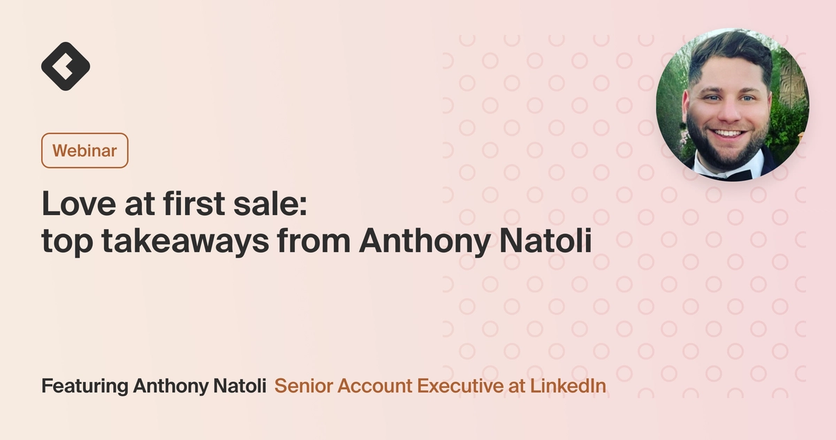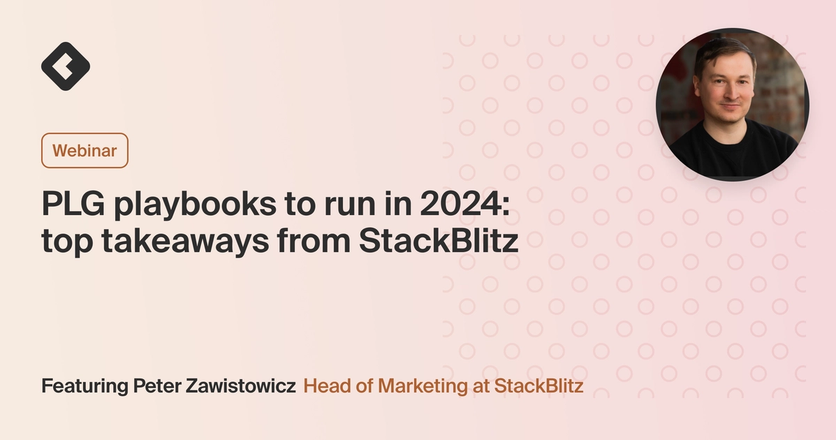How to use signals to craft irresistible outbound: top takeaways from Jed Mahrle
In a crowded sales landscape, it takes more than fluffy personalization to rise above the rest.
We talked to Jed Mahrle, founder at Practical Prospecting, about using modern buying signals to fuel outreach as part of our recent event: How to use signals to craft irresistible outbound.
Here are three of the top takeaways from that conversation (check out the full recording above).
1. Stand out in a saturated market
If it seems like more and more outbound messages are landing in your inbox, it’s probably because they are.
In fact, it’s estimated that more than 376 billion emails will be sent and received each day by 2025—a nearly 23% increase from 2020. It’s no wonder that Google and other email service providers are cracking down on bulk senders.
“In terms of your buyer's perspective, there's now a ton more outbound activity coming at them,” Jed said. “They're getting bombarded, so they've closed their walls.”
In other words: It’s both harder and more important for sales reps to break through the noise.
This is where personalization and relevance come into play. While the two are sometimes conflated, it’s important to understand the difference.
You can personalize a message based on surface-level demographic details, but relevance shows you’ve really done your homework.
“Relevance is when you've researched very specific things about a person or a company that gives you a hypothesis around a problem they might be having,” Jed said.
Here’s a common example: Say one of your target accounts is hiring. Companies often hire people to help solve a problem or kick off a new initiative. In this way, the details of a job listing can help you tie your value proposition to that company’s specific pain point or objective.
Common Room’s filters and real-time alerts features allow you to quickly find and stay notified of activity from key accounts, including job listings. This makes it easy to prioritize and engage accounts based on hiring trends, recent news and events, and much more.
That said, personalization still has an important role to play. Relevance doesn’t really matter if your message stays buried at the bottom of someone’s inbox.
Personalized touches can help you stand out from the crowd and get your message read in the first place.
“The whole point of personalization [...] is to not make it the point of the message, but something additive to make your message stand out a little bit,” Jed said. “So I am a fan of using it in that sense, but obviously relevance and finding key signals that give you a problem hypothesis are the most important parts.”
Make sure your outbounding is both personalized and highly relevant. For instance, calling out that you’re from the same geographic area (and a fan of the same sports teams) can help you get your foot in the door, but you have to follow that up with well-researched messaging that speaks to a prospect’s specific challenges and goals.
2. Optimize your offer
Effective outbound is all about reaching the right person, at the right time, with the right message.
Nailing the first two can be tough, but it’s often the third where reps fall flat.
“Where I see people go wrong is, they'll have these ABM platforms that are telling them that these accounts have intent, and then the SDRs are reaching out because people at this company clicked on ads or engaged with whatever,” Jed said. “But they don't really have a why, they just know that there was some sort of engagement, so their messaging still lacks that relevance.”
Common Room’s Person360 feature allows you to automatically collect, deanonymize, enrich, and match all signals to a unified profile for individuals and organizations. This makes it easy to connect with the people and companies behind buying signals with full context.
But relevance isn’t the only factor that can make or break a message. If your offer is weak, your efforts will likely be wasted.
“The key thing when it comes to creating irresistible outbound is an extremely strong offer,” Jed said.
Unfortunately, most “offers” look a lot more like “asks.”
“Everyone's offering the same thing, which is a demo, a meeting, a discovery call, and prospects are bombarded with that,” Jed said.
The goal should be to provide value before asking for time on someone’s calendar. Think helpful content or tangible examples of how your product can help solve a business-relevant problem.
The offer of adding yet another meeting to someone’s calendar isn’t much of a carrot. Instead of building your offer around a demo or discovery call, lead with value to build trust. If the prospect finds value in your first message, they’ll be more open to booking a meeting and learning more about your product.
3. Apply inbound intel to outbound strategy
As one of Jed’s previous managers used to say, “Every inbound lead was an outbound lead yesterday.”
Put another way: The people buying from you today can tell you a lot about the people who might want to buy from you tomorrow.
“When I was starting as an SDR at PandaDoc years ago, my whole process was pretty much just, ‘This is my ICP, I'm going to call down the list, give them a generic pitch,’ and it was brutal,” Jed said. “I was struggling a lot.”
But by studying current inbound leads and learning what made them more likely to book a demo or make a purchase, Jed was able to start honing in on signals he could use for outbounding.
“Go into your inbound data [...] and figure out, what are the patterns that you can find?” Jed said. “That's where you'll identify these signals.”
Once you can predict which companies are more likely to become inbound leads, you can apply that intelligence to prospects.
“For example, maybe this person just got promoted into a new role, and now their first responsibility is to upgrade their tech stack,” Jed said. “So that's a signal, people that just got promoted. You may notice they recently implemented another piece of software that required them to purchase additional software like integrations and things of that nature. That's another signal. You may notice that that person previously worked for one of your customers before. That's a really big signal [...], people who left your customers and went to a different company.”
Next it’s time to test out these signals and iterate as necessary.
Common Room’s segments feature allows you to automatically add individuals or organizations to dedicated lists based on customizable criteria. This makes it easy to quickly surface, monitor, and engage specific people and companies at scale.
“What I like to do is then create outbound campaigns that are built around one or two of these different signals, test them out, see which ones are the most relevant, the ones that are performing the best, and then focus on those ones specifically,” Jed said.
Digging through data is a manual, time-consuming task without the right tools. It pays to use solutions that will help you capture relevant signals, tie them to real people and accounts, and scalably take action on them—up to and including automated outbound.
Crafting irresistible outbound isn’t hard. Getting access to the customer intelligence you need, making sense of it, and acting on it quickly is.
These are just a few of the takeaways from our conversation with Jed Mahrle.
Watch the recording for the full story.
Elevate outbounding with Common Room
Get started for free or get in touch to see how Common Room can help you capture every signal, connect it to a real person and account, and optimize outbounding at scale.
We think you'd like these

Beyond intent: top takeaways from Leslie Venetz
Apr 9th, 2024·7min read
Love at first sale: top takeaways from Anthony Natoli
Mar 18th, 2024·6min read
PLG playbooks to run in 2024: top takeaways from StackBlitz
Feb 13th, 2024·6min read
Customer data platform (CDP) vs. customer intelligence platform (CIP): differences, similarities, and symbiosis
May 10th, 2024·7min read
